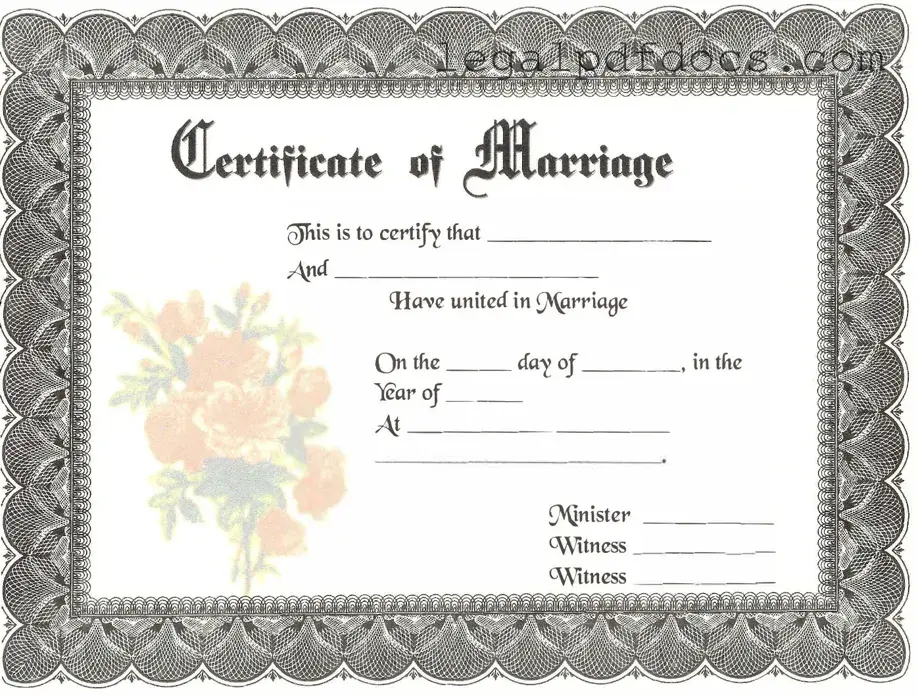The Marriage Certificate form plays a crucial role in the legal recognition of a union between two individuals. This document serves as official proof of marriage, capturing essential details such as the names of the parties involved, their respective birth dates, and the date and location of the marriage ceremony. Typically, the form requires signatures from both spouses, as well as witnesses, to validate the event. Additionally, it may include information about the officiant who conducted the ceremony, ensuring that all legal requirements are met. Understanding the significance of each component within the Marriage Certificate form is essential for couples planning their wedding, as this document not only solidifies their commitment but also facilitates various legal processes that may arise in the future, such as name changes or spousal benefits. By familiarizing themselves with the form's requirements and implications, individuals can navigate the complexities of marriage with greater confidence and clarity.
